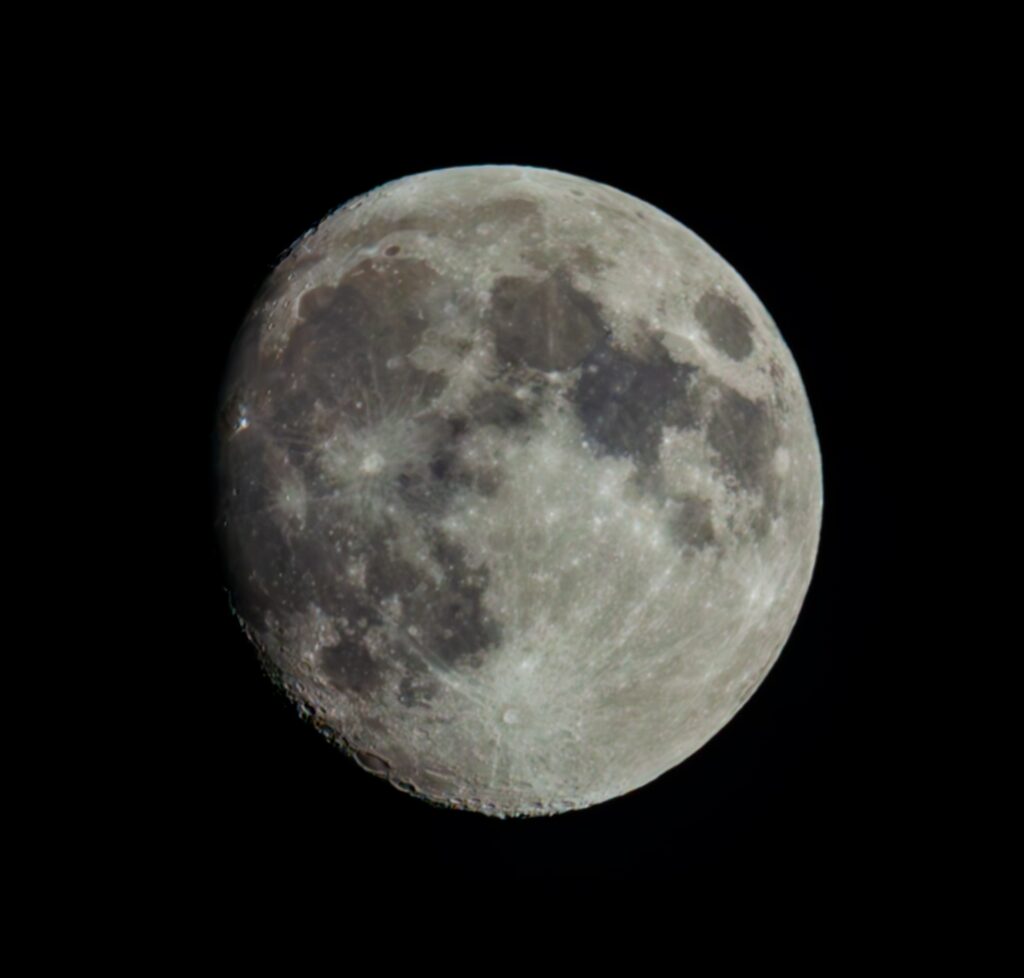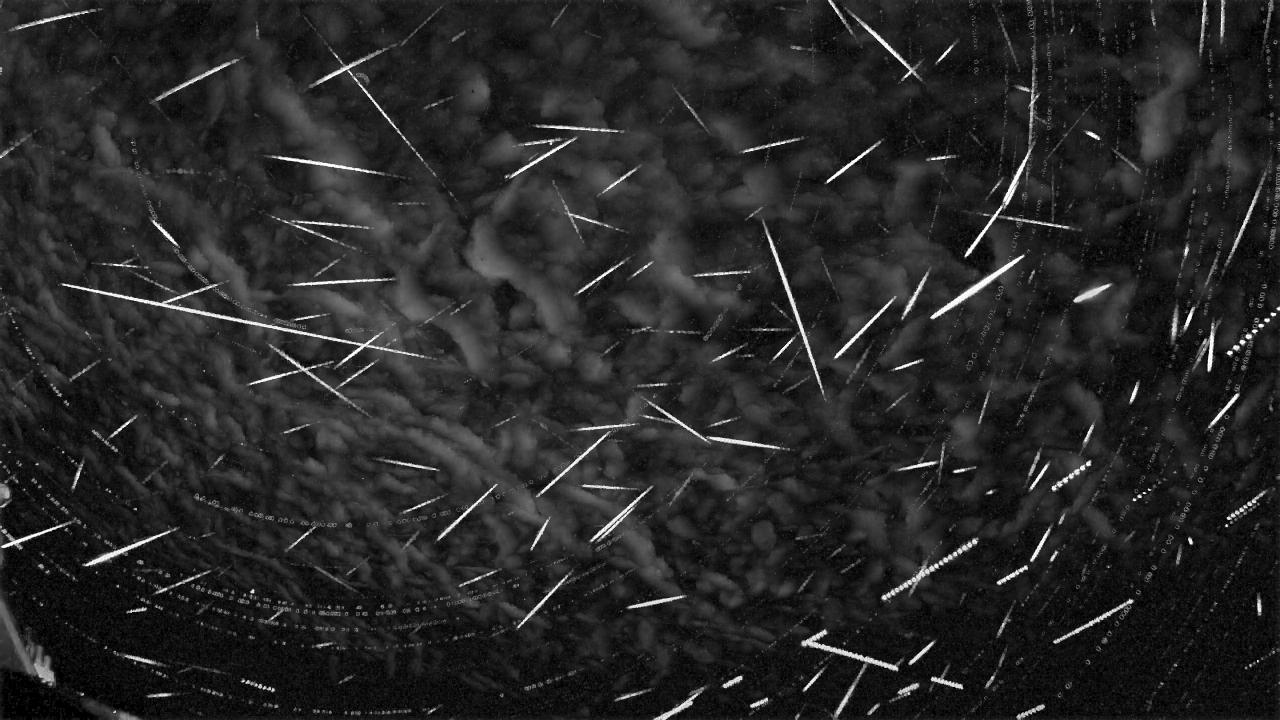
Around 6 months ago I was lucky enough to acquire this Sky-Watcher BK P1145EQ1 telescope for free from a friend.
I had no experience of astrophotography, but after doing some online research I discovered that it does not need to be an expensive hobby.
To capture images of celestial bodies using a telescope all I needed to get started was a mobile phone, an adapter to secure my phone over the lens of the telescope (I use this one), a Bluetooth lens shutter (I use this on) to avoid camera shake when taking photos, and a planetary website (I use this one) to help you find objects to photograph.
Below are some of the photos I have taken using my telescope and my mobile phone. All the photos are captured from my garden in Plymouth. The Focal Length of the telescope is 500mm, with a Diameter/Aperture of 114mm. Images were taken using either a Super 25 and 10mm eyepiece.

This image of the moon was taken on the night of the 20th August 2024. It was the night after the 2024 Blue Moon. The Moon was 99% full. This photo is a single image taken using the ‘Pro’ camera setting on my Samsung Galaxy S20 FE. Camera settings were – ISO1600, Shutter speed 1/750, Multi focus enabled, White balance A4400K. The image was captured as a jpeg. After capture the image was processed in Photoshop.

This image of the moon was taken on the night of the 20th August 2024. It was the night after the 2024 Blue Moon. The Moon was 99% full. This photo is a single frame from a video recording taken using the ‘Pro video’ setting on my Samsung Galaxy S20 FE. The full video can be seen below. Video settings were – ISO3200, Shutter speed 1/4000, Multi focus enabled, White balance A4400K. The image was captured at 30 frames per second. After capture this single frame was extracted in VLC Media Player and further processed in Photoshop.

This image of the moon was taken on the night of the 24th August 2024. The Moon was 71% full and in its Waning Gibbous phase. This photo is a single image taken using the ‘Pro’ camera setting on my Samsung Galaxy S20 FE. Camera settings were – ISO3200, Shutter speed 1/750, Multi focus enabled, White balance A4400K. The image was captured as a RAW image. After capture the image was processed in Photoshop.
The movie below is of Saturn, taken on the night of the 24th August 2024. Because of the relatively short focal length of my Sky-Watcher BK P1145EQ1 telescope, this is the maximum magnification I could achieve. With the said though, you can just about make out Saturn’s rings.

This image of the moon was taken on the night of the 29th August 2024.
The Moon was 19% full and in its Waning Gibbous phase.
This photo is a single image taken using the ‘Pro’ camera setting on my Samsung Galaxy S20 FE. Camera settings were – ISO3200, Shutter speed 1/750, Multi focus enabled, White balance A4400K.
The image was captured as a RAW image. After capture the image was processed in Photoshop.

This photo of Saturn and its rings is a single frame from a video recording taken using the ‘Pro video’ setting on my Samsung Galaxy S20 FE. The video was taken on the night of the 29th August 2024.
Video settings were – ISO3200, Shutter speed 1/4000, Multi focus enabled, White balance A4400K. The image was captured at 30 frames per second.
After capture this single frame was extracted, along with around 400 others, in VLC Media Player. The image was further processed in Photoshop.

This photo of Jupiter and 4 of its moons, Io, Callisto, Europa, Ganymede, was taken in the early morning on the 14th September 2024.
The photo is a single image taken using my Canon EOS 400D camera connected to my telescope with a Svbony T ring adapter. ISO-1600, 0.6sec exposure. The image was further processed in Photoshop.

This image of the Harvest Moon was taken on the night of the 18th September 2024.
The Moon was 100% full.
This photo is a single image taken using the ‘Pro’ camera setting on my Samsung Galaxy S20 FE. Camera settings were – ISO3200, Shutter speed 1/750, Multi focus enabled, White balance A4400K.
The image was captured as a RAW image. After capture the image was processed in Photoshop.

This image, from the same night as the image above, is of a partial lunar eclipse of the Harvest Moon.
This photo is a single image taken using the ‘Pro’ camera setting on my Samsung Galaxy S20 FE. Camera settings were – ISO3200, Shutter speed 1/750, Multi focus enabled, White balance A4400K.
The image was captured as a RAW image. After capture the image was processed in Photoshop.

This photo of the moon, around 6pm on the evening of the 13th November 2024.
The photo is a single image taken using my Canon EOS 5D mark ii camera connected to my telescope with a Svbony T ring adapter. ISO-800, 1/100th sec exposure. The image was further processed in Photoshop.

